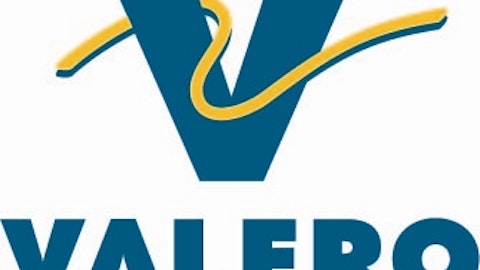The rally continues. With a pullback in late February only knocking down the S&P 500 index by 3%, it seems the “dip” that everyone was waiting for never came. Troughing at 1485 on February 26th, this broad index has climbed to a multi-year high of just over 1540, an increase of another 3.7%.

For those value minded investors who don’t like to chase, myself included, the pressing question is “what now?” Buying names that haven’t participated in a rally are often a bad idea: laggards are laggards for a reason, after all.

One lagging sector worthy of an exception, however, is Energy. According to a report by Bespoke, the Energy sector is among those with the fewest stocks above their 50-day moving average. At the same time, the Oil and Gas industry is undergoing a technological revolution that is returning production to North America and is doing so at a low cost.
Increasing supply is a big reason why global prices of oil and especially natural gas have come down. Worries of oversupply are keeping Energy stocks from participating in this rally.
I think these worries are unwarrented. Low cost of production in many of these new fields will keep things profitable in North America. Most of the pain will be felt in traditionally “marginal” production countries whom require high oil prices in order to be profitable.
In the meantime, investors can buy high-quality oil producers at a reasonable price. Today I will look at three of my favorite. All of them pay a good dividend and they are all poised to benefit from the trend of increasing North American production. They are listed by relative conviction from lowest to highest.
BreitBurn Energy Partners (NASDAQ:BBEP)
Market cap: $1.93 billion
Dividend Yield: 9.7%
Debt/EBITDA: 2.5 (vs. 2011 average of 4.6)
Dividend Coverage Ratio: 1.1x
BreitBurn Energy
Partners is an oil and gas Master Limited Partnership (MLP) which acquires, develops and exploits properties in the US. Founded in the 80s on the idea that technology would bring more oil discoveries in North America, BreitBurn’s goal is to acquire properties with long-life reserves, further develop, exploit and ultimately return cash to shareholders. They don’t engage in exploration.

Currently, BreitBurn is trading right at its book value with a very compelling dividend. All discounts come for a reason, however. Since BreitBurn does not engage in exploration, they grow production and earnings through acquisition only. Like many MLPs, they have a target leverage ratio, and so acquisitions are funded by dilutive secondary offerings. In full acquisition mode now, BreitBurn has done five secondary offerings in the last two years, keeping the stock price down.
However, I still think BreitBurn is a good value here. The company has a debt/EBITDA ratio lower than most MLPs. Although their dividend to distributable cash flow is narrower than I would like, most of their oil and gas production is already locked in through price hedging. This predictable cash flow keeps the dividend secure.
ConocoPhillips (NYSE:COP)
Market cap: $70.6 billion
Dividend yield: 4.56%
Debt-to-Capital Ratio: 31%
The newly independent ConocoPhillips (NYSE:COP), now an explorer, producer and transporter of crude oil, natural gas and natural gas liquids, has been an early mover in unconventional drilling in North America. They are in the midst of a restructuring that will ultimately result in 3-5% long-term production growth and significantly higher margins per barrel of oil.

To achieve this, the company has acquired many acres of land while beginning some time-consuming and capital-intensive projects in North America. At the same time, they have been shedding far-flung legacy production assets. Less production now and more spending for future projects resulted in a substantial funding gap in 2012, which has spooked investors.

Chart by author, data from Q4 2012 Earnings slides
ConocoPhillips (NYSE:COP) has a game plan. In the short run, $9.6 billion in asset sales will more than cover the funding gap. Meanwhile, stock buybacks and capex reductions from disposed assets have chipped away at total obligations. Recently, on the company’s “Analyst Day,” management explained that their high-margin growth projects will create over $6 billion in additional cash flow. This will more than offset the funding gap and allow the company to increase its already industry-leading dividend yield.
Occidental Petroleum Corporation (NYSE:OXY)
Market cap: $66.2 billion
Dividend Yield: 3.13%
Dividend CAGR: 15.8%
Production Growth: 5-8%, mostly oil
Occidental Petroleum Corporation (NYSE:OXY) is a California based explorer and producer of mostly oil, but also natural gas and natural gas liquids. They do have a smaller midstream and chemicals business, too. Much of its production is domestic. Their largest plays include the Permian Basin of Texas and some very desirable fields in California which get Brent Crude pricing.

Occidental Petroleum Corporation (NYSE:OXY) has reached a stage where many of its biggest domestic projects in the Permian and Bakken have begun production and are already adding to the bottom line. Capital expenditure is expected to drop by $600 million while increasing production has benefited revenue growth and operational efficiencies have taken hold. Free cash flow expectations for 2013, therefore, are much higher. Construction of the Al Hosn gas plant, in which Occidental Petroleum Corporation (NYSE:OXY) has a partnership interest, will be complete in 2014 and will also add to the bottom line.
Unlike the other two, Occidental has no major negatives right now. Everything seems to be going smoothly. They are committed to a higher dividend, yet have production growth which outstrips the “supermajor” oil companies. Occidental Petroleum Corporation (NYSE:OXY) is at the top of my conviction list.
The article Energy Stocks Down On Their Luck; Consider These 3 originally appeared on Fool.com and is written by Casey Hoerth.
Copyright © 1995 – 2013 The Motley Fool, LLC. All rights reserved. The Motley Fool has a disclosure policy.





